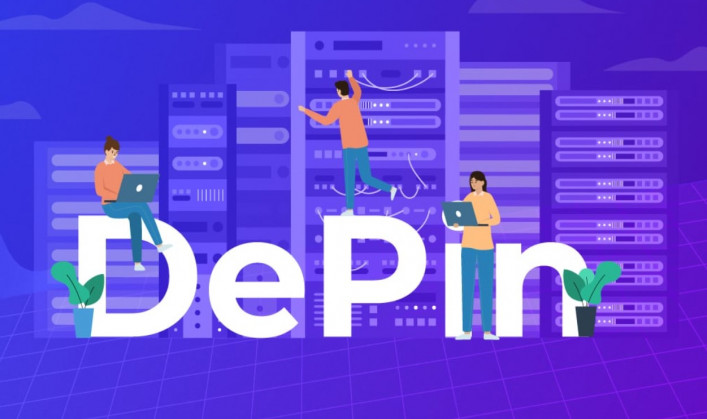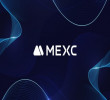29 July 2025
Decentralized Physical Infrastructure Networks (DePin)
Technology is evolving rapidly, and one of the most intriguing innovations is the emergence of Decentralized Physical Infrastructure Networks (DePin). This groundbreaking approach is reshaping how physical infrastructure, such as communication networks, energy grids, and transportation systems, is created, managed, and maintained. This article delves into what DePin is, its advantages, its implementation, and the future for this transformative technology.
UndeBrstanding DePin Development
Decentralized Physical Infrastructure Networks Development, or DePin Development, involves using blockchain technology and decentralized networks to manage physical infrastructure. Unlike traditional centralized systems, where a single entity controls the infrastructure, DePin empowers a distributed network of participants to manage and operate these systems collectively. Blockchain technology underpins this approach, offering a secure, transparent, and efficient method for managing physical assets.
Key Features of DePin
1. Decentralization: DePin networks operate without a central authority, distributing control across a wide range of participants. This approach reduces the risk of single points of failure, enhancing the resilience and reliability of the infrastructure.
2. Transparency: Every transaction and activity within a DePin network is recorded on a blockchain, ensuring that all actions are transparent and verifiable. This level of transparency fosters trust among participants and ensures accountability.
3. Security: Blockchain technology provides a high level of security, safeguarding the network from potential attacks and ensuring the integrity of the data.
4. Efficiency: By removing intermediaries and facilitating direct peer-to-peer interactions, DePin networks can operate more efficiently, lowering costs and improving service delivery.
Benefits of DePin Development
The benefits of DePin development are far-reaching, offering significant advantages to both individuals and society. Here are some key benefits:
1. Increased Resilience
Traditional centralized infrastructure systems are vulnerable to single points of failure. For example, if a central server fails, it can disrupt the entire network. In contrast, DePin networks distribute control among multiple participants, making the system more resilient to failures and attacks. This resilience is particularly crucial for critical infrastructure, such as energy grids and communication networks, where downtime can have severe consequences.
2. Enhanced Security
Security is a paramount concern for physical infrastructure, especially in an age of increasing cyber threats. DePin networks leverage blockchain technology to secure transactions and data, making it exceedingly difficult for hackers to compromise the system. Additionally, the decentralized nature of DePin networks means there is no single point of attack, further enhancing security.
3. Cost Efficiency
DePin networks can significantly reduce costs by eliminating intermediaries and enabling direct peer-to-peer interactions. For instance, in a decentralized energy trading platform, individuals can buy and sell electricity directly with each other, bypassing traditional utility companies and their associated fees. This cost efficiency can make essential services more affordable for consumers while increasing profitability for participants in the network.
4. Empowerment of Individuals
DePin technology empowers individuals by giving them greater control over the infrastructure they rely on. Instead of depending on large corporations or government entities, individuals can participate in the management and operation of the infrastructure themselves. This democratization of infrastructure management can lead to more equitable access to essential services and greater participation in decision-making processes.
The Technology Behind DePin
To fully understand the potential of DePin, it's essential to grasp the underlying technology. Several key components make DePin networks possible:
1. Blockchain Technology
Blockchain is the foundation of DePin networks. This distributed ledger technology records all transactions securely, transparently, and immutably. In a DePin network, blockchain technology is used to record ownership of physical assets, track transactions, and enforce smart contracts. The decentralized nature of blockchain ensures that no single entity controls the network, making it resistant to tampering and censorship.
2. Smart Contracts
Smart contracts are self-executing contracts with the terms of the agreement written directly into code. They automatically execute and enforce the terms of the contract when specific conditions are met. In a DePin network, smart contracts can automate various processes, such as payments, transfers of ownership, and resource allocation. This automation reduces the need for intermediaries, increasing the network's efficiency.
3. Decentralized Autonomous Organizations (DAOs)
A Decentralized Autonomous Organization (DAO) is an organization run by code rather than people. DAOs operate on a blockchain and are governed by smart contracts. In a DePin network, DAOs can manage the infrastructure in a decentralized manner. Participants in the network can vote on decisions, such as changes to the network protocol or resource allocation, through the DAO. This ensures that the network is governed democratically, giving all participants a say in its operation.
4. Internet of Things (IoT)
The Internet of Things (IoT) refers to the network of physical devices connected to the internet that can communicate with each other. In a DePin network, IoT devices can monitor and manage physical infrastructure in real-time. For example, IoT sensors can track energy usage in a decentralized energy grid or monitor road conditions in a decentralized transportation network. The data collected by IoT devices can be recorded on the blockchain, ensuring transparency and enabling data-driven decision-making.
The Future of DePin Development
Although DePin technology is still in its early stages, its potential is immense. As the technology matures, several key trends and developments are likely to emerge in the coming years:
1. Increased Adoption Across Industries
As more industries recognize the benefits of decentralization, the adoption of DePin technology is expected to increase. Sectors such as healthcare, agriculture, and logistics are likely to explore DePin solutions to improve efficiency, security, and transparency. For example, decentralized healthcare networks could allow patients to securely share medical records with providers, while decentralized agriculture platforms could enable farmers to track and trade crops directly.
2. Integration with Emerging Technologies
DePin technology is likely to be integrated with other emerging technologies, such as artificial intelligence (AI), machine learning, and 5G. For instance, AI could optimize the management of decentralized energy grids, while 5G could enhance the connectivity of IoT devices in DePin networks. The convergence of these technologies could create new opportunities for innovation and further accelerate the adoption of DePin.
3. Development of Interoperability Standards
Interoperability will be crucial for the success of DePin networks. To enable seamless communication and interaction between different DePin networks, industry stakeholders will need to develop interoperability standards. These standards will ensure that different networks can work together, creating a cohesive ecosystem where assets and data can move freely across platforms.
4. Regulatory Clarity and Compliance
As DePin technology continues to evolve, regulatory frameworks will need to adapt to accommodate decentralized systems. Governments and regulatory bodies are likely to develop new regulations specifically designed for DePin networks, addressing issues such as data privacy, security, and consumer protection. Regulatory clarity will help build trust in DePin technology and encourage more organizations to adopt decentralized solutions.
5. Focus on Sustainability
Sustainability is becoming an increasingly important consideration for businesses and consumers alike. DePin networks have the potential to support sustainable development by promoting the efficient use of resources, reducing waste, and enabling the adoption of renewable energy. In the future, we can expect to see more DePin initiatives focused on addressing environmental challenges, such as decentralized platforms for carbon trading or decentralized waste management systems.
6. Enhanced User Experience
For DePin technology to achieve widespread adoption, it must become more user-friendly. This means developing intuitive interfaces, simplifying the onboarding process, and providing clear guidance on how to participate in decentralized networks. As DePin solutions become easier to use, more individuals and organizations will be able to take advantage of the benefits of decentralization.
7. Rise of Decentralized Finance (DeFi) Integration
Decentralized Finance (DeFi) is another rapidly growing sector that could significantly impact DePin development. DeFi platforms enable users to access financial services, such as lending, borrowing, and trading, without the need for traditional banks. By integrating DeFi with DePin networks, participants could access new financial opportunities, such as decentralized financing for infrastructure projects or tokenized ownership of physical assets. This integration could unlock new ways to fund and manage physical infrastructure.
8. Growth of Community-Led Initiatives
One of the key principles of DePin is the empowerment of individuals and communities. As DePin technology matures, more community-led initiatives are likely to emerge, where local groups take control of their infrastructure. This could include decentralized energy cooperatives, community-owned internet networks, or local transportation solutions. These initiatives could lead to more equitable access to essential services and greater community resilience.
Conclusion
Decentralized Physical Infrastructure Networks (DePin) represent a transformative approach to managing and operating physical infrastructure. By leveraging blockchain technology, smart contracts, and decentralized networks, DePin offers a range of benefits, including increased resilience, enhanced security, cost efficiency, and environmental sustainability. As DePin technology continues to develop, we can expect to see increased adoption across various sectors, integration with emerging technologies, and the rise of community-led initiatives. Whether you're a developer, entrepreneur, or simply curious about the future of infrastructure, now is an exciting time to explore the possibilities of DePin.






